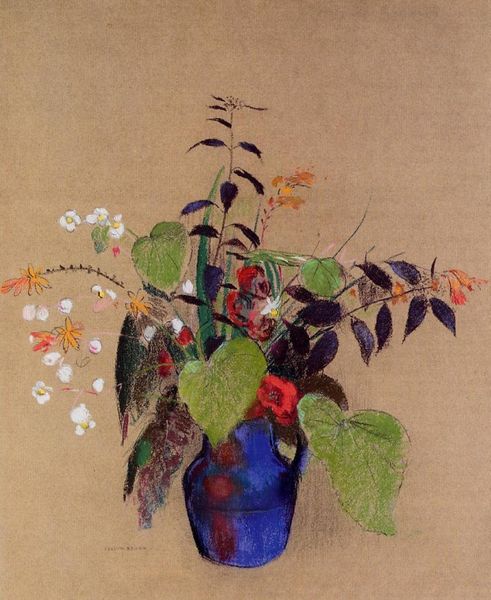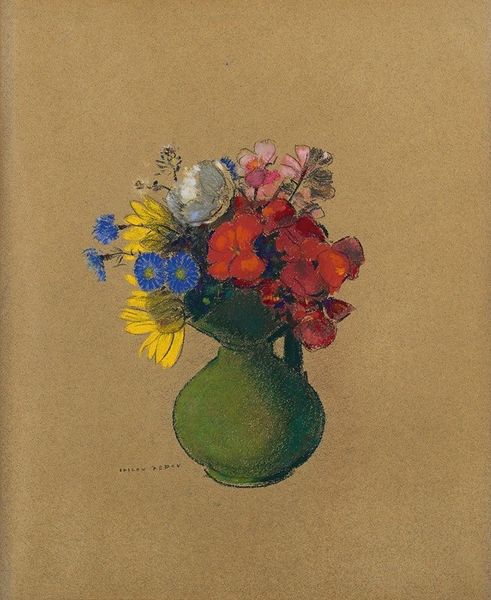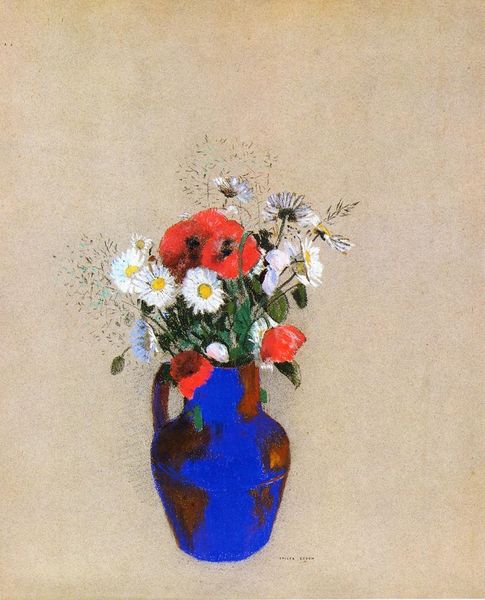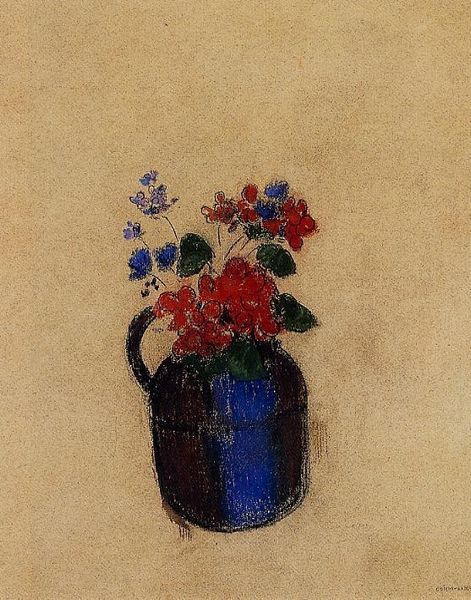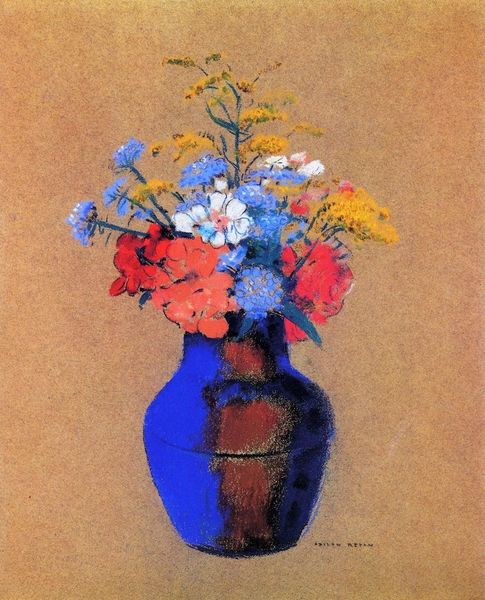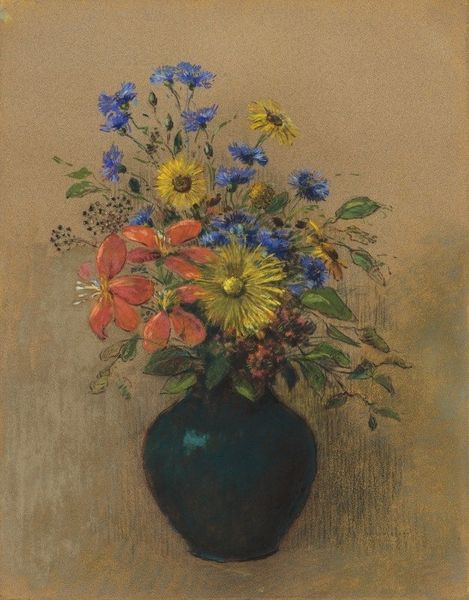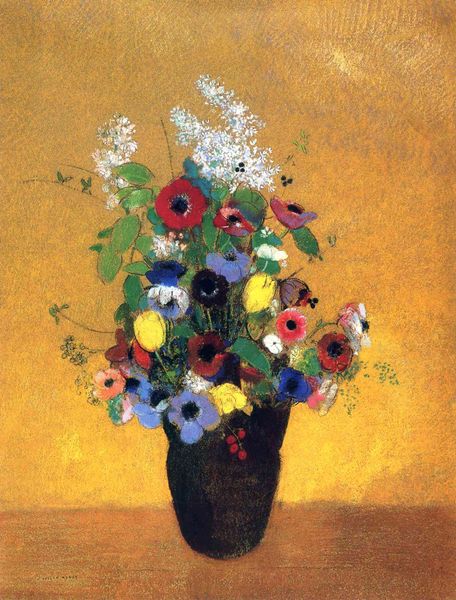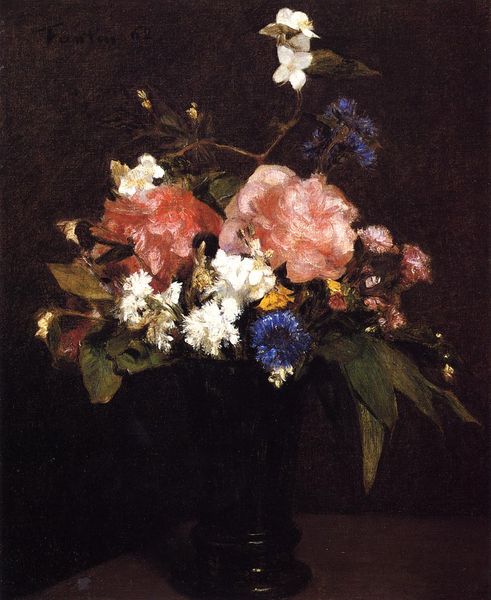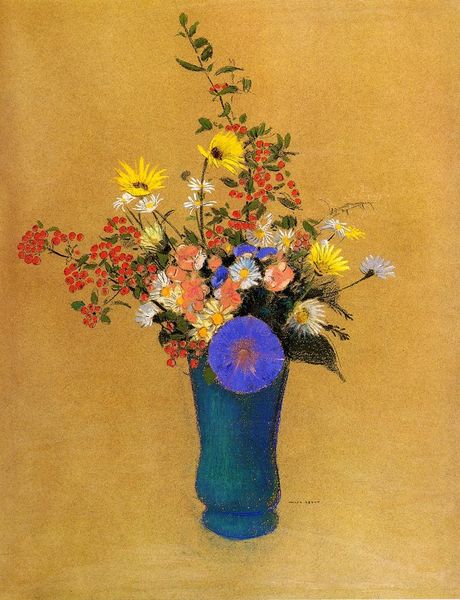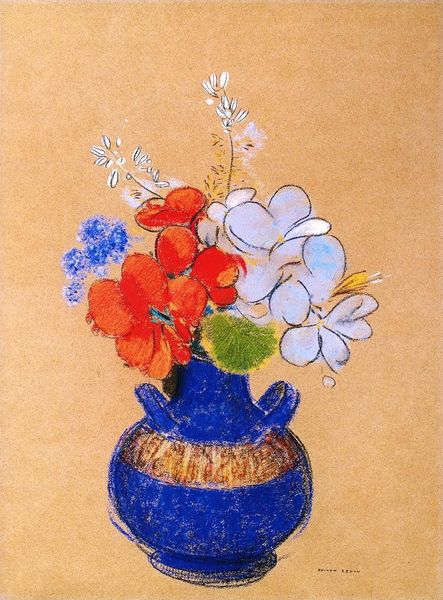
Dimensions: 54.9 x 41.9 cm
Copyright: Public domain
Curator: Right now, we’re standing in front of "Flowers in a Vase," created in 1909 by Odilon Redon using gouache and pastel. Editor: Immediately, I’m struck by how…tender it is. Like a memory half-faded, fragile. And the earthy vessel holding such delicate blooms—unexpected! Curator: Indeed. It’s fascinating to consider Redon's shift from primarily monochromatic works to these explosions of color later in his career. "Flowers in a Vase" isn’t just about aesthetic beauty; it’s about production and consumption in early 20th-century France. The pastel itself became much more accessible as manufactured object, leading more women to consider professional opportunities linked to decorative arts or other mediums that employed these objects. Editor: Hmm. True. The pastel lends a kind of dreamlike quality, right? The blurring of the edges... almost as if these flowers are emerging from a mist. It reminds me a bit of the fleeting nature of beauty, or maybe even life itself, especially with the colors and bloom of the flowers presented. Curator: Absolutely, and speaking of context, Redon wasn't traditionally trained in academic painting. So while flowers as subject matter adhere to an old tradition, Redon used color theory in the 19th Century, where new chemical pigments were becoming available at mass production for the public for a symbolic and expressionist purpose, rather than imitative of direct reality, it becomes deeply intertwined with commodity fetishism. Editor: So much meaning from simple materials! And maybe, that very accessible element is where the true artistry lies. Taking something almost pedestrian – accessible and inexpensive like pastels – and elevating it to such ethereal heights! I like that idea even more than flowers now... Curator: And think, too, about how it democratized image making at the turn of the century with pastel drawing, where artistic labor became more visible in terms of the individual subjectivity being manifested within a social history in painting and the context behind it. Editor: What a profound example of material and technique shaping artistic expression in dialogue with their contemporary societies! A beautiful, if somewhat melancholic reflection, through the eyes of Redon! Curator: Precisely! And Redon captures something deeply rooted about the turn of the 20th Century!
Comments
No comments
Be the first to comment and join the conversation on the ultimate creative platform.

